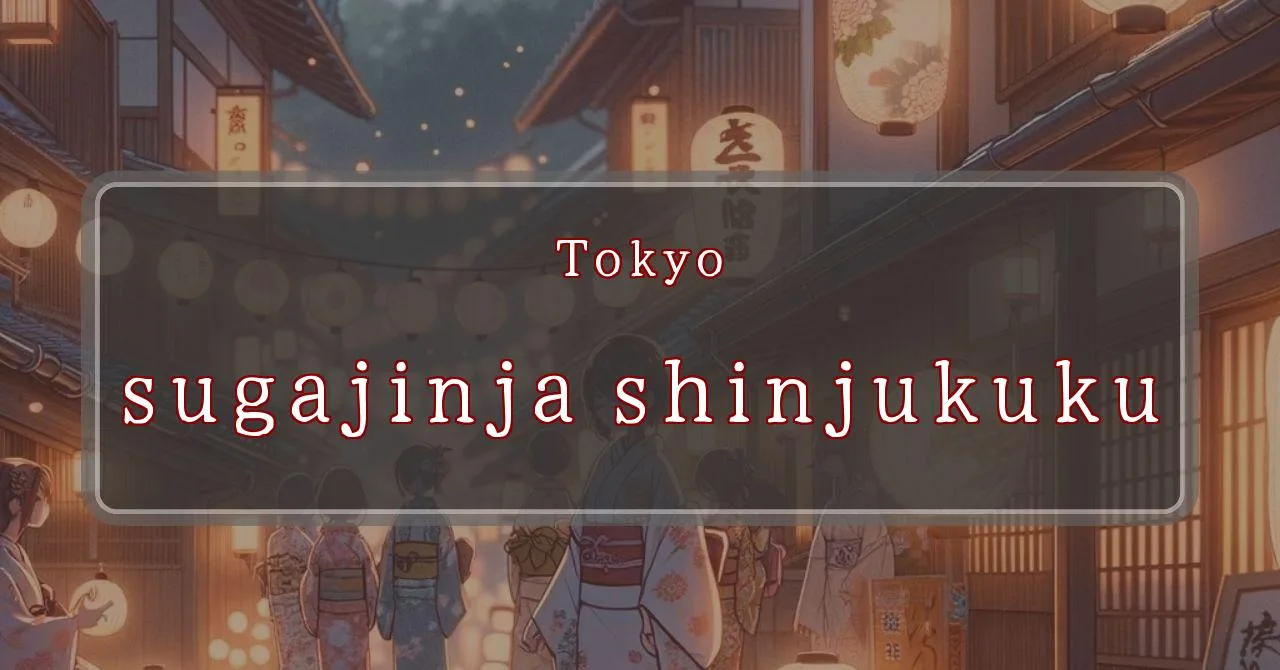Enchanting melodies and vibrant hues await at Suga Shrine’s summer festival.
Basic Information
Suga Shrine is a Shinto shrine located in the Yotsuya district of Shinjuku, Tokyo, Japan. It is dedicated to the deities Susanoo-no-Mikoto and Ukanomitama-no-Mikoto, and is considered the tute, Tokyo 160-0018, Japan
Main Events and Attractions of the Festival
The Suga Shrine Festival is a vibrant and lively event that attracts many visitors each year. The festival features a variety of events and attractions, including:
Mikoshi Procession
One of the main highlights of the festival is the mikoshi procession. A mikoshi is a portable shrine that is carried through the streets by a team of people. The mikoshi is believed to be inhabited by the deity of the shrine, and carrying it is seen as a way to bring good luck and prosperity to the community. The mikoshi procession is a lively and colorful event, with people of all ages participating.
Kagura Performance
Kagura is a traditional Japanese performing art that is often performed at Shinto shrines. Kagura performances typically involve music, dance, and storytelling, and they are believed to bring good luck and purification to the audience. The Suga Shrine Festival features a variety of kagura performances, which are a great way to learn more about Japanese culture and tradition.
Food Stalls
No Japanese festival is complete without food stalls! The Suga Shrine Festival features a wide variety of food stalls selling everything from traditional Japanese dishes to international cuisine. There is something for everyone to enjoy, and the food stalls are a great place to sample some of Japan’s delicious food.
Games and Activities
The Suga Shrine Festival also features a variety of games and activities for people of all ages. There are games for children, such as ring toss and beanbag toss, as well as games for adults, such as bingo and raffles. There are also a variety of activities, such as face painting and calligraphy, that people can enjoy.
Fireworks Display
The Suga Shrine Festival concludes with a spectacular fireworks display. The fireworks are launched from a nearby park, and they light up the night sky with their vibrant colors. The fireworks display is a beautiful and fitting end to the festival, and it is a great way to celebrate the summer season.
Blessings and Deities
Suga Shrine is dedicated to the deities Susanoo-no-Mikoto and Ukanomitama-no-Mikoto. Susanoo-no-Mikoto is the god of storms, the sea, and agriculture, while Ukanomitama-no-Mikoto is the goddess of food and agriculture. The shrine is believed to bring blessings of good luck, prosperity, and protection from natural disasters.
- Susanoo-no-Mikoto: God of storms, the sea, and agriculture
- Ukanomitama-no-Mikoto: Goddess of food and agriculture
- Blessings: Good luck, prosperity, protection from natural disasters
Origin and History
The origins of Suga Shrine are unclear, but it is believed to have been founded in the early 17th century. The shrine was originally dedicated to Inari, the god of rice and agriculture. In the mid-17th century, the shrine was merged with another shrine dedicated to Susanoo-no-Mikoto, and the two deities began to be worshipped together. Suga Shrine has been a popular place of worship for centuries, and it continues to attract many visitors today.
- Founded: Early 17th century
- Original Deity: Inari, god of rice and agriculture
- Merged: Mid-17th century with shrine dedicated to Susanoo-no-Mikoto
- Current Deities: Susanoo-no-Mikoto and Ukanomitama-no-Mikoto
Tips and Notes for Visitors
Here are some tips and notes for visitors to Suga Shrine:
- Hours: The shrine is open from 9:00 AM to 5:00 PM daily.
- Admission: Admission to the shrine is free.
- Dress Code: There is no specific dress code for visiting the shrine, but it is considered respectful to dress modestly.
- Photography: Photography is permitted within the shrine grounds, but it is prohibited inside the main shrine building.
- Smoking: Smoking is not permitted within the shrine grounds.
Parking Information
There is no parking lot at Suga Shrine, but there are several public parking lots nearby. The closest parking lot is located a 5-minute walk from the shrine.
- Closest Parking Lot: 5-minute walk from the shrine
- Other Parking Lots: Several public parking lots nearby
Popular Stalls and Food Carts in Recent Years
| Type of Stall | Description |
|---|---|
| Takoyaki | A staple at Japanese festivals. Characterized by a crispy outside and a creamy inside. |
| Jaga Butter | A simple yet popular snack of hot potatoes lavishly topped with melted butter. |
| Baby Castella | Small castella cakes, sweet and fluffy treats enjoyed by children and adults alike. |
| Grilled Ayu with Salt | Fresh ayu fish grilled whole with salt, a savory taste of Japanese summer. |
| Shaapin | A unique gourmet item influenced by foreign cuisine, with a chewy skin wrapping the filling. |
| Okonomiyaki | A Japanese grilled dish where you often choose your own ingredients for a personalized flavor. |
| Cotton Candy | A fluffy, sweet snack that’s extremely popular with children. |
| Chocolate Banana | A banana coated in chocolate, a fun and visually appealing dessert. |
| Kushiyaki | Various types of ingredients skewered and grilled, an easy-to-enjoy snack. |
| Yakisoba | Fried noodles mixed with a special sauce, a fast food favorite in Japan. |



